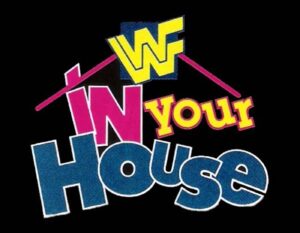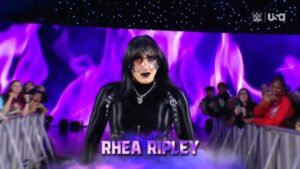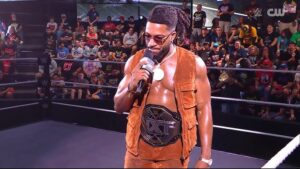Back in the June of 2011, then heel mid-carder CM Punk was presented with a unique opportunity. The disgruntled superstar was given a live microphone and a green light. He could go out and say whatever he wanted to the raucous Las Vegas crowd. Fast forward to the February of 2017, and the effects are still being felt. How did the Pipe Bomb change the WWE?
The Pipe Bomb Revisited
WWE in 2011
Before getting to the promo itself, you have to remember what WWE was like in 2011. John Cena was the WWE Champion, but what else is new? The Big Show and Kane were Tag Team Champions, and Christian had just defeated Alberto Del Rio for the World Heavyweight Championship. Kofi Kingston had just beaten Sheamus for the United States Championship, and Ezekiel Jackson was the Intercontinental Champion.
The pay per view before the Pipe Bomb promo was Extreme Rules. Of all the competitors on the show, only three wrestlers had any experience in the indies. Only Tyson Kidd, Sin Cara (aka Mistico) and Rey Mysterio had wrestled for places like CMLL and Ring of Honor. There was only one women’s match on the card, a 5 minute bout between former tag team partners, Michelle McCool and Layla.
At the time, it felt like WWE had little-to-no interest in “internet darlings” or wrestlers that didn’t fit the stereotypical WWE mold. If they weren’t bodybuilders, there was no chance in hell that they’d get a big push from WWE.
June 26th, 2011
CM Punk sat, legs crossed, at the top of the ramp and he began to address John Cena. It started off like any other wrestling promo, with Punk addressing Cena and his WWE Championship. He said he didn’t mind Cena as a person, only that Cena was perceived as being the best. Then, he infamously referred to himself as the Best in the World, a moniker that would stick with him for the rest of his wrestling career.
But that’s when things took an interesting turn. Punk went from promoting himself in his promo to peeling back the curtain. The straightedge superstar slowly but surely broke down the fourth wall, blurring the lines between kayfabe and reality.
Punk addressed the perceived reality that Cena only enjoyed the success that he had because he sucked up to Vince McMahon. He added on that Hulk Hogan and The Rock were the same way. Punk effortlessly slipped between kayfabe and reality, promoting his own ability as a wrestler, and how he felt he was being poorly booked.
Paul Heyman Guy
He expressed that he felt part of the reason he was being punished was his affiliation with Paul Heyman. Heyman’s protege, Gabe Sapolsky, had been running Ring of Honor when CM Punk wrestled there, and he played a role in WWE getting a contract with the company. When Punk came to WWE, Heyman had been exiled to running developmental, where Punk became his pet project.
Depending on who you believe, Paul Heyman would receive dozens of e-mails instructing him to get rid of Punk, as he wasn’t going to pan out in WWE, but Heyman refused. It’s during this promo that CM Punk refers to himself as a “Paul Heyman Guy”, like this former WWE Champion and UFC fighter you might have heard of, Brock Lesnar.
What separates this promo from typical WWE promos and YouTube shoot interviews is that Punk effortlessly slipped back into promo mode. He stated that the biggest difference between he and Brock was that unlike Brock, he was leaving with the WWE Championship.
Punk brought up Vince McMahon’s famous (or infamous) “brass ring” metaphor, where you can make it in the WWE as long as you’re willing to grab the brass ring. The disgruntled superstar claimed that he’d grabbed so many of the imaginary brass rings that he realized that’s exactly what they were, imaginary. He vented that despite being the best at everything, he still hadn’t been properly rewarded.
Hey Colt Cabana, How Ya Doin?
This is where things got really fun, because Punk began speculating about what he’d do after he left with the WWE Championship. He name-dropped other wrestling promotions like New Japan Pro Wrestling and Ring of Honor. After mentioning Ring of Honor, he smirked at the camera, saying “Hey Colt Cabana, how ya doin?”.
For those who aren’t in the know, CM Punk and Colt Cabana’s story is almost identical to that of Sami Zayn and Kevin Owens, except that Cabana’s WWE career never panned out. They learned to wrestle together, they made towns together, and they worked together often in ROH.
Punk goes on to say that he knows the WWE doesn’t need him. He knows the WWE will make money with or without him (foreshadowing), and that Vince McMahon would be more successful if he didn’t listen to suck-ups like John Laurinaitis. For more background, Laurinaitis, the head of personnel at the time, was allegedly one of the people that wanted Punk’s release when he was in developmental.
“When Vince McMahon’s Dead”
Punk said something even more controversial next, when he not only said he thought the company might be better off when Vince was dead, only to turn around and say there’s no chance because it was going to be taken over by his idiot daughter and his doofus son-in-law.
The idiot? Stephanie McMahon. The doofus? Triple H. Punk is about to tell a personal story about how Vince McMahon bullied him when his microphone was disconnected. Punk stormed off-stage, and his career was never the same.
After the pipe bomb, Punk was rocketed into the main event, where after a bumpy start, he’d end up holding the WWE Championship for 434 days. After that, Punk’s WWE career took an ugly fall. He had an unforgettable match with the Undertaker and a solid bout with Brock Lesnar, but he was never the same main event star. But believe it or not, this article isn’t about CM Punk, but the WWE he left behind.
Survivor Series 2016
We looked at the Extreme Rules card from 2011 earlier. What did we see? A lot of WWE originals, gimmicky tag teams, and a humiliating women’s division. Fast forward to the Survivor Series pay per view last year.
On the pre-show, there was a cruiserweight tag team match where all six competitors had wrestled everywhere from PROGRESS and Dragon Gate to TNA and PWG. There were more men with indy experience in this match alone than the entire Extreme Rules pay per view.
But that’s just the pre-show. With the exception of the Brock Lesnar vs. Goldberg main event, every other match on the card featured at least one wrestler from the independent scene. And these weren’t just technicians either.
The Faces of WWE
The biggest male stars in WWE, with the exception of John Cena, were all involved in the 5-on-5 Survivor Series match. Among those stars? Former Ring of Honor World Champions, Seth Rollins and Kevin Owens. Look at Kevin Owens. Does he look like a bodybuilder? No, but to this day, he’s still the WWE’s Universal Champion. And that’s without mentioning former CZW standout, Dean Ambrose.
But the biggest shocker was the inclusion of the then-WWE Champion, AJ Styles. AJ Styles was Mr. TNA. AJ Styles was always going to be the one guy that never wrestled for WWE. Instead, he was part of their longest match, and he was holding the company’s most prestigious title.
CM Punk, once a wrestler who didn’t get a push because he was some unconventional indy darling, would have a problem in the modern WWE. Not because he’d be discriminated against for his look or his indy past, but because he’s simply not as good as the guys they have now.
The Impact of The Pipe Bomb
So what changed? When did WWE go from the “land of the giants” to a world where Owens, Styles, Rollins, and Ambrose, a few of WWE’s most recent champions, were all stars on the indy circuit. Is it possible that Punk’s promo shattered the glass ceiling and allowed the talented misfits to come through?
It’s hard to say, but following the pipe bomb, we did see indy guys get more looks. It wasn’t long after that that Daniel Bryan won Money in the Bank and eventually became World Heavyweight Champion. The following year, Rollins and Ambrose debuted as part of The Shield and received the push of a lifetime.
So many people have said that this promo brought them back to wrestling. They lost interest during the growing pains of the PG Era, and without stars like The Rock or Stone Cold Steve Austin, they just couldn’t watch. But Punk’s promo made them start watching again, and they still do to this day. Myself included.
Maybe Punk’s pipe bomb shook the foundation, forcing McMahon and Triple H to look closer at the indies. Maybe by referencing Ring of Honor and New Japan Pro Wrestling, the promotions became more popular.
Here Today, Gone Tomorrow
CM Punk always painted himself as a martyr. He was the “voice of the voiceless” and he spoke for the people. While he’s said that he looks back on his time with WWE as a failure, maybe he shouldn’t. He said he was out to make a chance, and whether he knows it or not, he did.
Back to the root question, is the pipe bomb responsible? I’d like to say yes. I’d like to say that while his own career ended poorly, this promo started a revolution. It changed the product, and I’d say it changed it for the better.
CM Punk’s pipe bomb made the fans feel heard. He gave them a voice, and that’s the voice that would change wrestling. It was the voice that buried Roman Reigns, it was the voice that turned NXT into a powerhouse, and most importantly, it was the voice that made the YES movement a reality.
The WWE is so much better in 2017 than it was in 2011. There are things that could be fixed, but it’s not bad. Sometimes it’s even good. And while we’ll likely never see CM Punk in the WWE again, it doesn’t hurt to remember all of the good that he, and his pipe bomb did.






